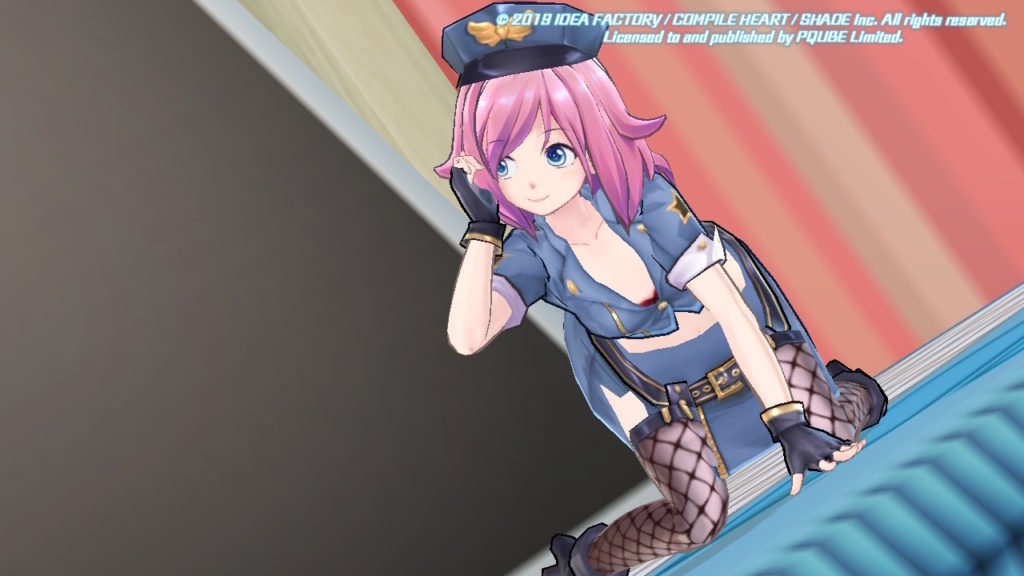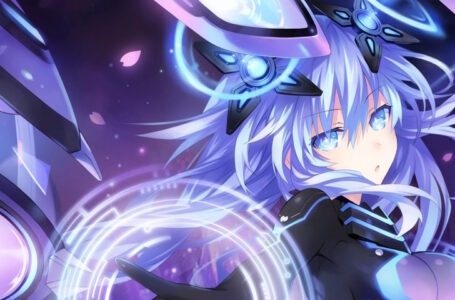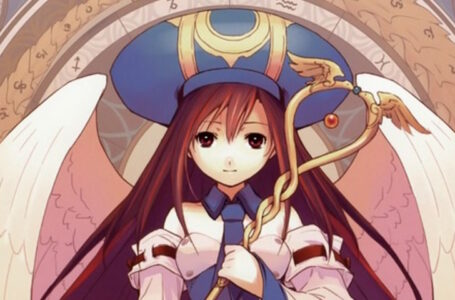6 of the fiercest queer gals in gaming
‘Tis Pride Month, so it is, and while there seems to be a particularly strong level of cynicism towards “brands” embracing the festivities this year, that’s no reason why we can’t celebrate some of our favourite characters.
So I present to you six of the fiercest queer gals in gaming — whether they’re completely open about their sexuality or just really, really, really obvious about it. And if you have your own favourites in this regard, be sure to let us know in the comments, via the usual social channels or via the “Write to Rice!” widget over on the right. If you do the latter, you stand a good chance of being featured in this week’s Rice Digital Friday Letters Page, and wouldn’t that be nice?
Bring on the ladies, then!
Bee-tan (Gun Gun Pixies)

Pixie Team’s Private Usamael, better known by her codename Bee-tan, is someone who knows what she wants and is not afraid to express those desires, regardless of how it might make her look. And that makes her stand out amid the society of planet Pandemonia, which collectively has mostly lost the knack of forming meaningful interpersonal relationships
Bee-tan and her partner in crime Kame-pon were chosen for a fact-finding mission to Earth on the grounds that they are some of the only Pandemonians who had successfully managed to cultivate an honest and genuine friendship with one another — despite the fact that they are, in many ways, polar opposites of one another. Bee-tan is open and honest about everything — including her sexual preferences — while Kame-pon tends to maintain an air of cool aloofness most of the time.
As a natural extrovert, Bee-tan is obviously frustrated by the problems that Pandemonia faces — so while her initial excitement over her mission to Earth taking place in an all-girls domitory is for somewhat less than wholesome reasons, as Gun Gun Pixies progresses it becomes clear that she has a genuinely honest interest in both Earth society and the wellbeing of the dorm’s occupants.
Mostly, though, Bee-tan loves girls. She really loves girls. She is thrilled any time she discovers a discarded pair of panties on the floor of the dorm, gleefully scanning them for later recreation in a more pixie-friendly size, and she is delighted any time something vaguely provocative happens in the dorm. She takes great delight in who she is, expressing that self to anyone who will listen — usually the long-suffering Kame-pon — but also seems to honestly care about the emotional wellbeing of everyone around her. There’s no-one better to have in your corner.
Mimi Houllier von Schwarzlang (Atelier Arland trilogy)

First introduced in Atelier Totori: The Adventurer of Arland and also appearing in its two follow-ups Atelier Meruru: The Apprentice of Arland and Atelier Lulua: The Scion of Arland, Mimi Houllier von Schwarzlang is a lonely noble girl who just wants to feel loved. Or liked. Or appreciated. Or noticed.
Trouble is, she has a bit of a mouth on her and, when we first meet her at least, she’s not very good at making friends. Indeed, her confrontation with Cordelia von Feuerbach at the newly established Adventurer’s Guild in Arland escalates so much that Cordelia rather pointedly awards Totori an adventuring license before even considering if Mimi is worthy of one — despite the fact that Totori has, at the time, just walked in the door and is feeling rather bewildered by the chaotic situation unfolding before her.
Not long after this incident, Mimi begins following Totori around, initially at a distance under the guise of assessing her abilities but subsequently joining her party. And as time goes on, it becomes abundantly clear that Mimi is absolutely head over heels for Totori. She follows her around like a lost puppy; she indirectly seeks her approval; she tries to compliment her awkwardly; and, in her own inimitable tsundere way, tries to help Totori be the best person she can be.
It’s a real case of “opposites attract”; Totori is kind, calm and gentle — you might go so far as to call her “meek” in her earliest adventures, but this quickly changes — while Mimi is loud, brash and blunt. And for the most part, she’s very honest, too — except when it comes to her feelings.
When under the influence of some rather peculiar mushrooms in Atelier Meruru, she finds herself accidentally confiding in the tomboy princess about her true feelings towards Totori — and it only becomes more and more obvious how much affection and love she holds for her longstanding companion as the series continues.
By the time Atelier Lulua rolls around, a number of years have passed, and Mimi seems to have mostly settled down; she’s seen by Totori’s side almost constantly and her distinctly tsundere tendencies have mellowed somewhat — though they haven’t vanished altogether. She seems to hold something of a grudge towards the mushrooms of the world, for one thing…
Uni (Neptunia)

The relationship between Nepgear and Uni throughout the Neptunia series is one of the biggest ongoing teases in all of video gaming. Their interest in one another is obvious to absolutely everyone — including the other characters in the games — but both of them tend to hold back when it comes to speaking their true feelings, except when nobody is watching.
At various points in the series, we’ve seen the pair of them sharing some rather intimate exchanges with one another, sending coded messages that make their mutual affection very obvious, and simply treating one another as something that is quite clearly a bit more than friends.
In many ways, Uni and Nepgear’s relationship is similar to that of Mimi and Totori in that Uni is a strong-willed tsundere character while Nepgear is kind and gentle, but there’s a somewhat different dynamic. While Nepgear can get easily flustered when overwhelmed with new information, she also has a responsible streak — likely from having to put up with her sister’s bullshit for years — she also acts as something of a “grounding” presence for Uni; Uni always seems noticeably calmer and more at ease when Nepgear is nearby, which can sometimes lead to her being a little more honest than she perhaps intends.
Whether or not Uni and Nepgear are actually involved has been a subject of some debate among the Neptunia fanbase for some time, but at this point it seems pretty obvious what the intention is. More recent installments have all but confirmed their relationship with one another — and it’s been a delight to see it blossom over the long term. As girls who represent some of the most underappreciated gaming platforms out there — Uni embodies Sony’s PSP and Vita, while Nepgear stands for Sega’s Game Gear — they deserve some happiness.
Homura (Senran Kagura)

Honestly, a significant proportion of Senran Kagura’s ensemble cast could fit quite comfortably into this article, but Homura is one of the characters who undergoes some of the most interesting progression and growth over the course of the series as a whole, so it’s Homura who gets the spotlight.
Homura is an interesting character because as the series progresses, her role changes considerably — and the longer we spend with her, the more “human” she feels.
Initially presented as a powerful antagonist representing the “evil” shinobi of Hebijo Academy, as Homura establishes initially a friendly rivalry and subsequently a close relationship with “good” shinobi Asuka, we start to discover she has plenty of hidden depth. We learn that she actually hails from a family of “good” shinobi, but was set on the “evil” path by the betrayal of that family — and in doing so, she becomes a textbook example of what “evil” means in the world of Senran Kagura.
“My mentor betrayed me,” she says. “My parents abandoned me. I thought I was worthless, better off dead. Yet Hebijo still took me in. And so I was reborn as Homura, the evil shinobi. Most don’t bother to recognise the truth. The truth that good discards some people. That evil saves some people.”
Asuka fits into all this neatly as Homura starts to firmly establish who she really is over the course of her actions in the various games. The pair’s initial rivalry quickly develops into mutual respect — Asuka typically refers to Homura as her “strongest friend” — and, over time, it becomes very apparent that the two don’t want to be apart from one another. Any time they’re together, their respective passions are at their fieriest; they both seem truly alive. And any time they fight one another, it’s always a surprise when they’re not in one another’s arms by the end of the experience, such is the strong level of connection and obvious physical attraction between the pair of them.
Homura even admits on several occasions that her own “humanisation” can likely be directly attributed to Asuka; without having met Asuka — and having been unconditionally accepted by her, regardless of her supposed “allegiance” — she would have probably ended up alone. If that isn’t a solid basis for a loving relationship, I’m not sure what is.
Jill Stingray (VA-11 HALL-A)

VA-11 HALL-A remains one of the absolute best examples of how it’s possible to create a genuinely inclusive, progressive game without resorting to obvious pandering to particular groups. Everyone in VA-11 HALL-A is just who they are; they don’t make a big deal of any aspects of their character, and just naturally reveal those things over time as it becomes relevant. In other words, no-one in VA-11 HALL-A introduces themselves by immediately reciting their entire sexual history or preferences at you; you get to know them like you would a real person — a bit at a time.
Protagonist Jill Stingray is probably the most interesting character in this regard, because despite the fact we “are” Jill for the duration of the game, she still has her own distinct arc, revealing more and more about herself as we progress through the overall narrative. It’s quite a while before we discover beyond a doubt that she is bisexual, and when we do stumble across that tidbit of information, it’s simply not a big deal; it’s just part of who she is that she’s absolutely comfortable with, and the subject comes up as a natural part of conversation rather than as a major event.
It’s perhaps also noteworthy that VA-11 HALL-A doesn’t place an emphasis on romance at all, which helps the matter of Jill’s sexuality feel more natural; it’s not a driving force of the whole experience, it’s just one of many interesting facets of her character alongside her porn addiction, the fact she talks to her cat (and her cat appears to talk back — at least to her), her propensity for spending money on useless tat rather than paying her bills and the way she has a habit of getting wrapped up in the stories her clients tell her while she’s on the clock at the titular bar.
I don’t think anyone could have expected the worldwide phenomenon that VA-11 HALL-A would become when it was first released back in 2016 (and previewed even earlier than that, in 2014) — but the fact that Jill has become such a beloved character ever since does my heart good. I don’t doubt that she has mixed many drinks and saved many lives.
Arnice (Nights of Azure)

And no compilation of queer girls in gaming would be complete without mention of one of the most openly gay video games out there: Gust’s excellent action RPG Nights of Azure.
Nights of Azure is interesting because Gust tends to hold a few things back in terms of explicitly depicting relationships between characters; this is especially apparent in the Atelier series, where even obvious relationships like Mimi x Totori can be argued to be a matter of interpretation. This is absolutely not so in Nights of Azure, however; protagonist Arnice and deuteragonist Lilysse are in love with one another, and there is absolutely no doubt whatsoever about that.
They spend most of their time together; they sleep together; they argue with one another as only lovers do; and they protect one another — Arnice protects Lilysse in a very literal sense by fighting back the forces of the Nightlord every evening, while Lilysse protects Arnice’s emotional wellbeing by being a constant pillar of support for her upon her return. Even if her cupcakes are truly one of the most horrifying things in the game.
Naturally, things are not simple for the pair — this is a video game, after all — and the main thrust of Nights of Azure’s narrative concerns Arnice’s attempts to find a way to deal with the Nightlord that doesn’t require Lilysse to sacrifice herself. It doesn’t take long to establish the fact that Arnice isn’t doing this for selfish reasons, mind; while, of course, she wishes to be able to remain alongside her loved one, she’s also keen to uncover the truth behind the whole situation — and perhaps prevent any future generations from having to deal with the prospect of giving up someone special in the name of “saving” everyone else.
Join The Discussion
Rice Digital Discord
Rice Digital Twitter
Rice Digital Facebook
Or write us a letter for the Rice Digital Friday Letters Page by clicking here!
Disclosure: Some links in this article may be affiliate links, which means we may earn a small commission if you make a purchase after clicking on them. This is at no additional cost to you and helps support Rice Digital!
- Letter from the Editor: passing the torch - June 30, 2023
- Super Woden GP 2 is looking promising - June 30, 2023
- Inti Creates is making a 32 bit-style Love Live action platformer - June 26, 2023






